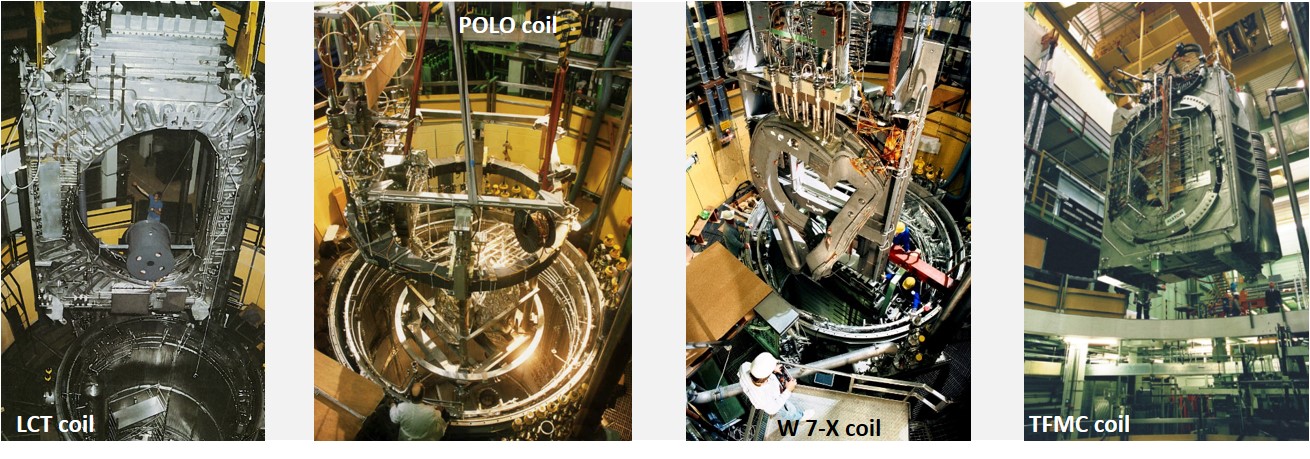Construction and testing of superconducting model coils for fusion

In 1976 the Large Coil Task1 (LCT) was launched. The aim was to develop the superconducting toroidal coils for a tokamak machine in scalable size. The project was carried out within the framework of an international cooperation involving EURATOM, Japan, Switzerland and the USA and was under the auspices of the "International Energy Agency" (IEA). The USA provided three toroidal coils and the test equipment. The other partners each supplied one toroidal coil. On behalf of EURATOM, the then KFK/ITEP developed one of these toroidal coils together with German industry (Siemens, Krupp, Vakuumschmelze). This LCT coil was first successfully tested in 1984 in today's KIT and later in 1986-87 in the test facility of the Oak Ridge National Laboratory. With this, basic design principles of a large forced-cooled superconducting magnet were developed and tested.
In 1985 the POLO (Poloidal Field Coil) Coil Project2 was started. The aim of the project was to develop the technology of external superconducting poloidal field coils for a Tokamak. The project was carried out in cooperation with CEA Cadarache, France. Within this project low-loss forced-cooled superconductor cables and cryogenic high-voltage technology for superconductor magnets were developed. The POLO Coil was successfully tested in 1994 in what is now KIT / ITEP.
Within the framework of the Development Association for Nuclear Fusion, the IPP Garching was supported in the development of superconducting magnet systems of the W 7-X stellarator from 1990-2000. In addition to the contributions to the conductor and component development, a prototype coil manufactured by industry (Ansaldo and Noell) was tested in 1999 in the background field of the LCT coil in today's KIT / ITEP to generate relevant force loads3.
In the project, which lasted from 1990 to 2002, the specific technology for the superconducting TF magnet system of ITER was developed. The European superconductor laboratories CEA Cadarache, ENEA Frascati, POLITO Torino and the Karlsruhe Research Centre under the coordination of EFDA were involved. The ITER Toriodal Coil (TF) model coil was built by the European industrial consortium AGAN (Ansaldo, GEC Alsthom, Accel, Noell). In 2001 the ITER TF model coil (TFMC) was tested alone and in 2002 in the background field of the LCT coil4. The comparison of the results with previously calculated data showed that the ITER TF coil system can be reliably built with the technology developed and tested here.
Literature
1. D.S. Beard et al., "The IEA Large Coil Task", Fusion Eng. Des. 7 (1 and 2) (1988) 1–230.
2. M. Darweschsad et al., "Development and test of the poloidal field prototype coil POLO at Forschungszentrum Karlsruhe, Fusion Eng. Des. 36 (1997) 227–250
3. R. Heller et al., "Test results from the Wendelstein 7-X stellarator demonstration coil", Cryogenics 40(8):561-567, 2000
4. A. Ulbricht et al., "The ITER toroidal field model coil project" Fusion Engineering and Design 73 (2005) 189–327
